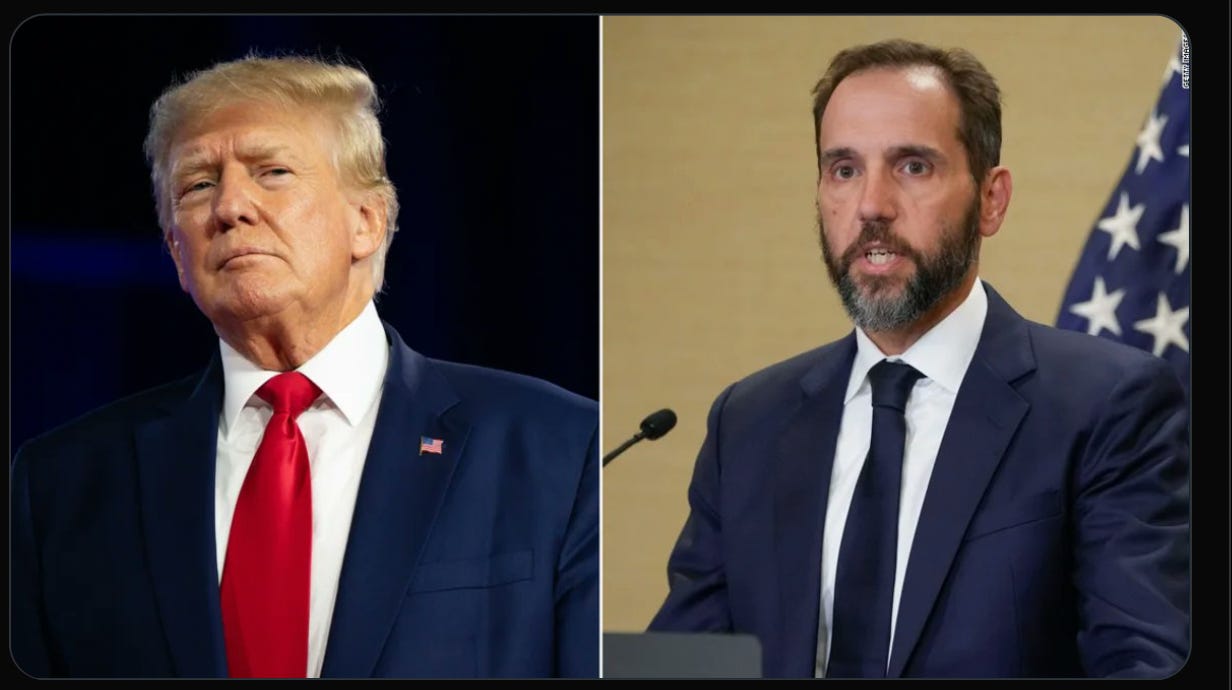The Supreme Court Has Agreed To Review The Justice Department's Use Of 18 U.S.C. Sec. 1512(c) In January 6 Prosecutions -- A "Lawsplainer"
What That Means for January 6 Cases and United States v. Donald Trump
This one reviews a hotly contested legal issue that normally gets resolved long before a case makes it to trial. Oftentimes a bad outcome for the defense on important motions pretrial is the key variable that leads to a guilty plea. That has been the case when it comes to the manner in which the Biden DOJ has employed the “Obstruction of Congress” charge under 18 U.S.C. Sec. 1512(c), as well as the manner in which district court judges have determined sentences for people convicted of that charge Let’s cover a few basics before we get to the text and disputed meaning of the statute.
When a defendant pleads guilty pursuant to a plea agreement, there are normally provisions in the agreement that each side will abide by at the time of sentencing in making arguments and recommendations to the judge. Those agreements are not binding on the judge, but in the vast majority of cases the judge goes along with what the sides have agreed to because there is generally no “miscarriage of justice” in doing so. There is no reason for the judge to upset the expectations of the two sides absent such a miscarriage of justice [such as would have happened in the case of the Hunter Biden plea agreement].
With regard to the Jan. 6 cases, where defendants have pled guilty to the Sec. 1512 count, the government has almost uniformly insisted defendants agree that two particular sentencing enhancements will be applicable. The combination of those two enhancements results in a recommended sentencing range for most defendants -- in the mid-teens to the low 20s (months) without the enhancements — increasing to a range in the low 40s to low 50s with the enhancements. In other words from less than 2 years to between 3.5 to 5 years.
In counseling clients about the practical reality of how sentences are actually served, a sentence in the high teens (months) means a period of actual incarceration of between 8 and 12 months. A sentence in the mid-40s (months) means a period of incarceration in the high 20s to low 30s.
The two sentencing enhancements are the difference between less than one year in custody, and between 2 and 3 years in custody. If a defendant goes to trial on the 1512(c) count and is convicted, the likely sentencing range goes up into the 50s to 60s in terms of months - actual custody time of around 4.5 to 5 years.
What if this statute was never meant to be applied in factual circumstances such as those that took place on January 6? What if, rather than the statue being a broad prohibition on all conceivable forms of “obstructive behavior”, the statute as passed by Congress, based on the language used, was only meant to extent an existing statute to “obstructive behavior” towards evidence and witnesses that adversely impacted fact-finding processes such as found in courts of law?
The January 6 case taken up by the Supreme Court this past week is United States v. Fischer. In the Petition for Writ of Certiorari — the filing by which the Supreme Court is asked to review a lower court decision — the question posed by Fischer for the Court to answer reads as follows:
Did the D.C. Circuit err in construing 18 U.S.C. § 1512(c) (“Witness, Victim, or Informant Tampering”), which prohibits obstruction of congressional inquiries and investigations, to include acts unrelated to investigations and evidence?
Before going further, let me give a word of caution to readers — if you are reading legal analysis regarding this subject on the internet from individuals who are not attorneys, you are likely to get over-simplified, incomplete and inaccurate information about complicated legal issues, particularly such as here where the issue is pending before the Supreme Court. It takes much thought, research, and drafting to advance a case to this point. Comprehension of the issues and arguments is not going to be gained from reading a few sources online and talking to a few people who claim they know about the issue. The arguments reflected in briefing to the Supreme Court — in most instances — are the result of hundreds of hours of work by multiple attorneys who are well-versed in the subject before they get started. Those arguments are directed to the most sophistical legal actors in the U.S. legal system — the Justices of the Supreme Court and their law clerks. These arguments are not directed at the untrained laymen.
Keep reading with a 7-day free trial
Subscribe to Shipwreckedcrew's Port-O-Call to keep reading this post and get 7 days of free access to the full post archives.




